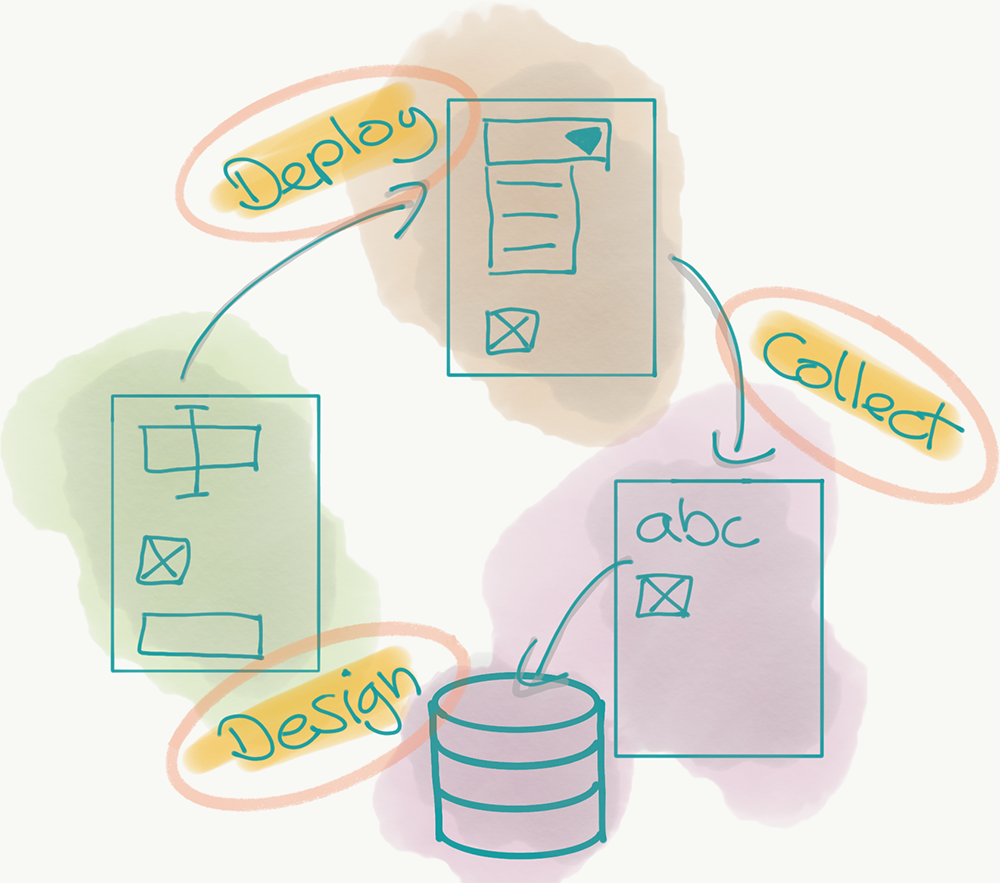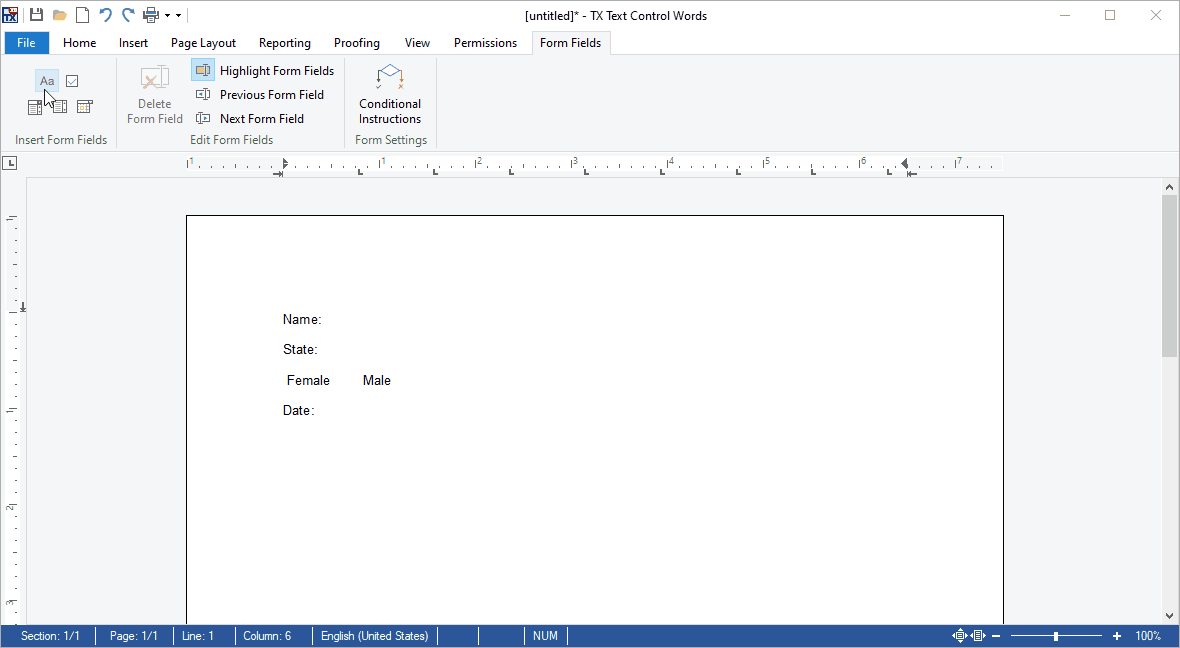Outlook X18: Document Workflow and Forms Processing
This article gives an overview of upcoming forms processing features of TX Text Control X18.

Forms are used in many business and organizational processes to collect data from a specific person or group of people. The streamlined creation and deployment of forms and the collection of that data is a challenge software needs to solve.
The paper-based, human-readable type of a form is important, because of two aspects:
- Humans need to understand the forms
- Legal requirements
At the same time, electronic forms help automating processes by making documents smarter. They could include meta information that define which data is mandatory and could be appended automatically.
Forms should be smart and contain conditions and constraints. Not only the syntax of a form field should be checked, validated and corrected, but nested conditions should be implemented to control the form completion process. Parts of a form might be only required, if a specific input have been made in another part of the form.
Using conditions, form designers can control the workflow of the complete form. Form fields can be disabled on specific actions on other fields. Content such as drop-down list items can be added dynamically when a specific value has been selected in another form field. This logic allows complex, automated workflows within form templates to provide the best available user experience when completing forms.
We are working on tools that cover the complete document lifecycle from creating the form, deploying it to end-users and to collect the data from various sources.

A form is created in an MS Word inspired interface which makes it easy for users to create complex forms in Windows and web applications. These forms can be deployed to all platforms including Windows applications, cross-browser, cross-platform web and mobile applications and as Adobe PDF documents that can be completed using standard software packages such as the Adobe Acrobat Reader.

TX Text Control X18 (28.0) will provide a form completion mode that allows users only to complete form fields. This can be combined with document protection features that provides editable regions for specific users or user groups. This way, very flexible forms can be crafted that can be deployed to various user groups.
When end-users completed the forms filling process, the data can be collected from these platforms. If a form has been completed in a PDF, TX Text Control can read that data and provide them as ready-to-use data objects.
Stay tuned for more features and details about TX Text Control X18.
ASP.NET
Integrate document processing into your applications to create documents such as PDFs and MS Word documents, including client-side document editing, viewing, and electronic signatures.
- Angular
- Blazor
- React
- JavaScript
- ASP.NET MVC, ASP.NET Core, and WebForms
Related Posts
Streamline Data Collection with Embedded Forms in C# .NET
Discover how to enhance your C# .NET applications by embedding forms for data collection. This article explores the benefits of using Text Control's ASP.NET and ASP.NET Core components to create…
Convert MS Word DOCX to PDF with Form Fields in C# .NET: Preserve or Flatten…
TX Text Control converts DOCX to PDF while preserving or flattening form fields, ensuring accurate import and export. Its flexible API simplifies form field handling for seamless document processing.
Export and Import Adobe PDF XFDF XML Files in .NET C#
This article shows how to export and import Adobe PDF XFDF XML files in .NET C# using the TX Text Control .NET Server component. Form fields from PDF documents are exported to XFDF XML files and…
.NET C# PDF Generation Techniques: Which Method is Right for Your Project?
This article explains the distinct advantage TX Text Control offers with its true WYSIWYG (What You See Is What You Get) template system, where templates are designed visually, similar to…
Best Practices for Mail Merge and Form Field Processing in ASP.NET Core C#…
This article provides best practices for mail merge and form field processing in ASP.NET Core C# applications using TX Text Control .NET Server. It shows how to use the Document Editor to create…






